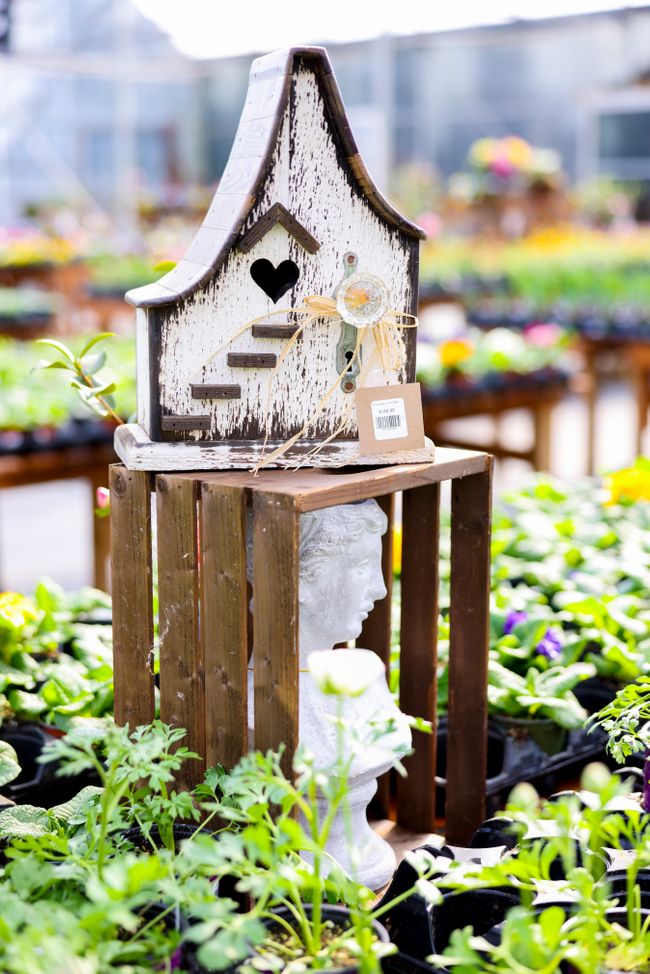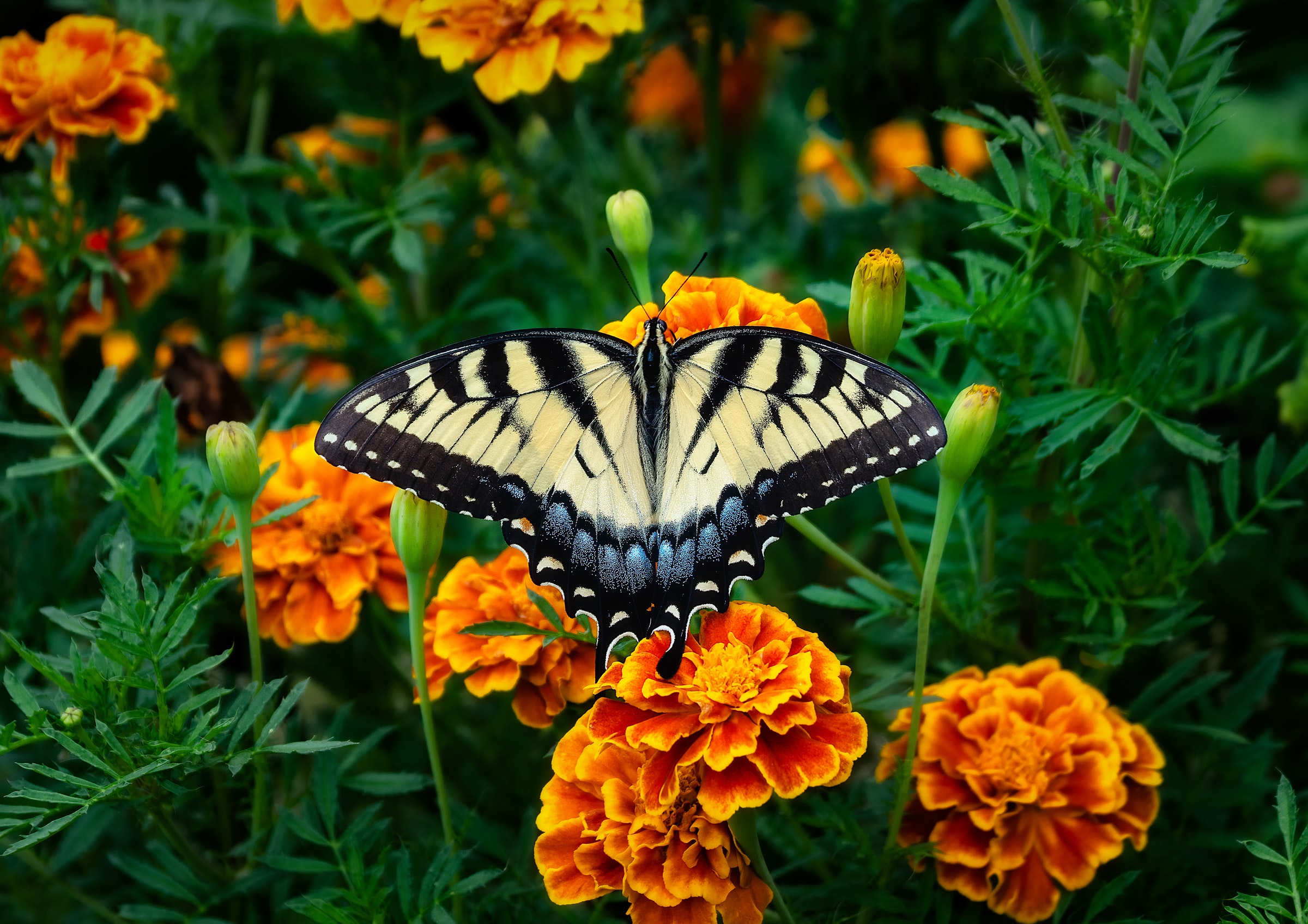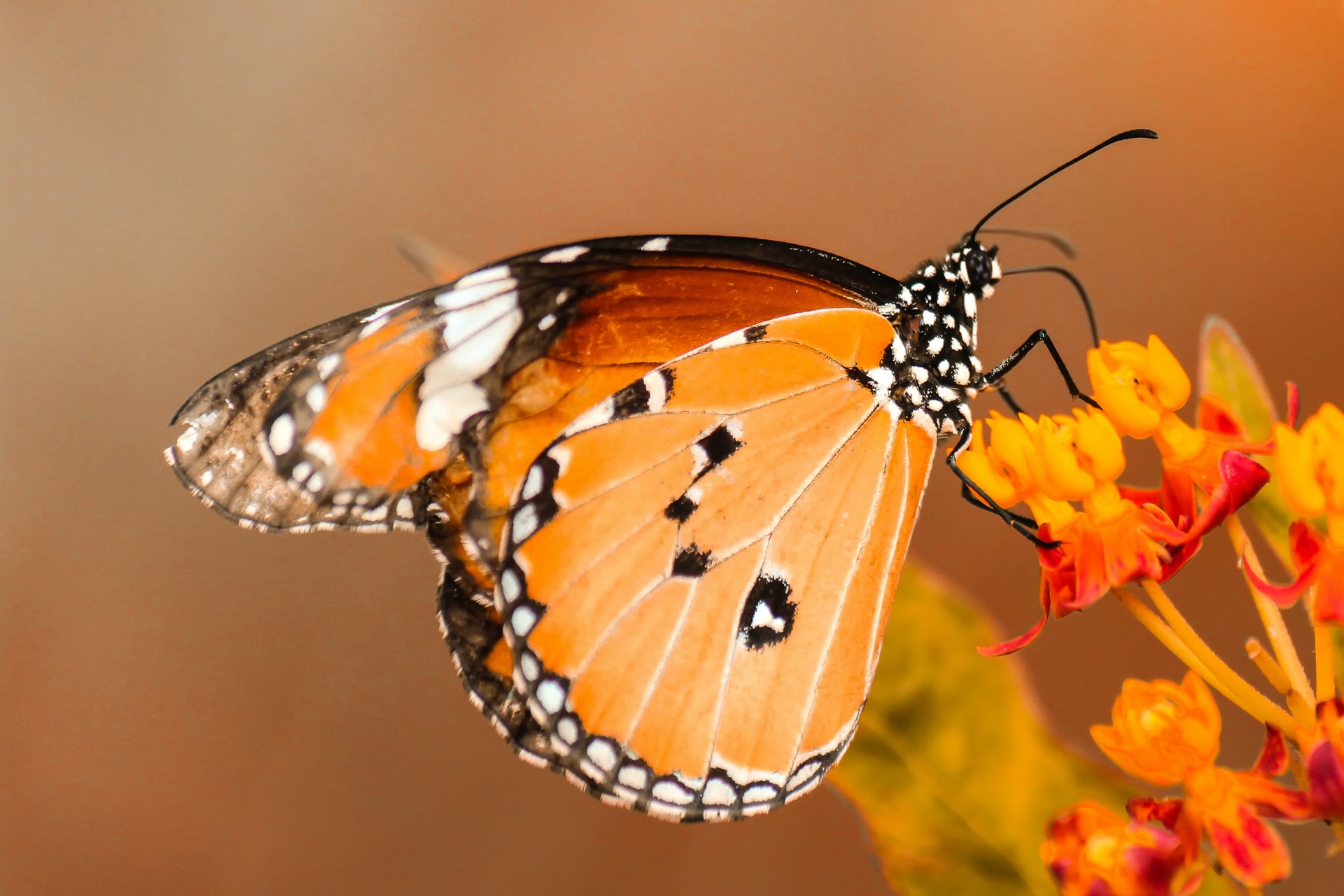Birds, butterflies, and bees are the trifecta of winged friends you want in your garden. These three B words deliver the ultimate P word – pollination. They all keep your garden ecosystem running efficiently by transferring pollen so your plants can reproduce. The bonus is that they are also beautiful to look at and add some excitement to your garden.
Birds, butterflies, and bees all have similar needs to our own. They want food, water, and protection from predators. Here’s some tips to attract them to your garden and make it a comfortable place that they’ll visit again and again.
Birds: Take Some Under Your Wing
The hummingbird is perhaps our favourite bird to welcome in the garden. For being a little bird, hummingbirds are big eaters and they consume about half their body weight in bugs and nectar. They feed about every ten to 15 minutes and can visit 1,000 to 2,000 flowers throughout the day!
Consider making Hummingbird Nectar to attract these birds to your garden and give them an easily digestible food source. It’s a simple sugar water solution you can make in minutes. Combine a 1:4 ratio of plain white table sugar to water. Slowly heat the solution for one to two minutes. Allow the solution to cool before adding it to your bird feeders.
Here’s some other tips to attract birds to your garden:
- Add a birdbath: Place it at least ten feet from dense foliage where predators may be lurking. Birds don’t like more than two inches of water so add flat stones to your birdbath if it is too deep. Change the water every few days in summer and use a heater in the winter.
- Use native plants: The birds in your area have adapted to eating the berries and seeds of native plants or using them as cover and nesting sites. Caterpillars tend to be birds’ meal of choice so consider species such as clover or dogwood that attract them.
- Set up a birdhouse: Bird feeders help supplement food when it is scarce. Hang the birdhouse in a concealed area of your yard with nearby branches for perching. Clearview Garden Shop has a wide variety of adorable birdhouses available and can help you find the best one for your birds.


Butterflies: Make a Metamorphosis in Your Garden
Your garden should serve as a sanctuary to nurture and protect the butterfly throughout the stages of its life. Consider shelter, water, and sun for your butterflies. Shrubs and trees help to block the wind from your garden for these fragile and lightweight creatures. Set up ‘puddling stations’ in these wind-blocked areas. These puddles of moist dirt or sand provide a good water source. Butterflies are cold-blooded insects and like to warm their bodies in the sun. Include a few spots in your garden where direct sunlight reaches for at least six hours each day.
The majority of butterflies prefer flower nectar but a few will feed on liquids such as from rotting fruit. Different types of butterflies feed on different plants at various stages of their lifecycle. It is suggested that you plant a wide range of flowers to accommodate them.
These are our top picks to include in your garden to attract butterflies:
- Marigolds: Make sure to deadhead these colourful flowers.
- Butterfly Bush: A fast grower and low-maintenance — plus a great name!
- Trumpet Vine: It is fast growing and needs regular pruning.
- Black-Eyed Susan: This flower works best in garden borders or in a cultivated patch of wildflowers.
- Coneflower/Echinacea
- Phlox
- Lavender

Bees: See What All the Buzz is About
Bee-lieve it or not, a single bee colony can pollinate 300 million flowers each day. They also play an important role in pollinating our crops for many of the fruits and vegetables that we eat. However, the honeybee population is in jeopardy because of rapid decline. The bees’ biggest threats are the lack of a safe habitat to build their hives and finding food sources.
Mason bees are gaining in popularity with gardeners. Research shows that this type of bee is a more efficient cross-pollinator and visits more flowers per minute than do European honeybees. Mason bees don’t use hives and in nature, they place their eggs in holes drilled by beetles or woodpeckers. You can attract mason bees to your garden with their own home similar to what is found in nature. Clearview Garden Shop sells lots of cute mason bee homes for your garden.
Here’s some tips for the placement of your mason bee home:
- Off the ground: The best location is to hang your mason bee house about 6 to 7 feet off the ground. A good place is under an eave of your house, garage, shed, or some other shelter. Make sure it is firmly attached to the structure and is protected from high winds and rain.
- Sunny spot: Bees are ectothermic which means their bodies do not regulate and retain heat. So place your mason bee house in an area that gets south or southeastern sun exposure to get the morning sun. The sun also helps them fly because they need a body temperature of about 90 degrees to do so.
- Near plants and mud: The mason bee house should be near pollen-producing plants since the bees usually won’t travel farther than 300 feet. There should also be a supply of clay-like mud nearby that the bees use to cover up their nesting holes.

One important thing to keep in mind is seasonality and remembering to provide the best care for your birds, butterflies, and bees throughout the year. By laying out the welcome mat for them, you will not only be helping them, but also your garden. And that’s another B word for you, being the BEST!
Free Gardening Resource
THE ULTIMATE GUIDE TO CLEMATIS!
Sign up for our newsletter and get your copy!

